Noises In the Wall
By Chris Williams on February 17, 2012.
I am hearing some scratching noises in my wall! What could it be and what should I do?
Scratching noises in the wall may be some type of pest activity and need to be addressed. This is a common scenario in the pest control industry. Over the years we have been faced with this same problem time and time again. Many things can cause noises in walls, and some of them are a cause for concern.
Some noises may be ruled out as mechanical in nature: expanding or contracting pipes and ductwork, siding heating up and cooling, machinery vibrations, or the wind catching gutters or siding, all may be mistaken for pest activity. Examination of the timing, frequency, and location of the noise may give rise to an explanation other than pest activity. If none of these causes can be determined, you may well have some type of animal or insect activity in the wall.
A List of Pests That Could be Making Noises in Your Wall
Bats, mice, rats, squirrels, and chipmunks are all common home invaders. Each of these animals can make a noise in the wall due to their movement and activity. Mice, flying squirrels, red squirrels, gray squirrels, and chipmunks store food in caches located in wall voids. They come and go through openings along the foundation, walls, and roof line. Nuts, seeds, and acorns are some of the foods stored inside. Mice, rats, and flying squirrels are nocturnal, foraging mostly at night, while red and gray squirrels, along with chipmunks are active during the daytime, leaving the nest then. The timing of the noise may indicate who is making the noise.
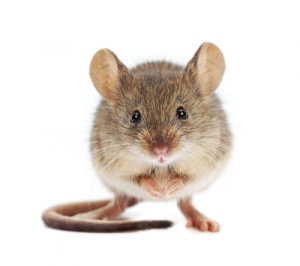 Mice
Mice
Mice may be heard chewing or moving acorns at night. A faint “tap tap tap tap”, along with the sound of small objects rolling or dropping is common. This may be accompanied by a slight rustling, and chirping. Mice are territorial and compete for habitat, sometimes fighting and scurrying about. This may sound like a commotion. Baby mice, or pinky’s also squeak a bit.
Rats
Rats are a bit more discrete, but do make noises. They do squeak a little, but mostly chew and rustle about as they move through wall voids. As they become more comfortable audible chewing sounds may come from the nest. Wires are in danger and may cause a fire if chewing is extensive. Arcing wires may emit a popping sound; smoke or other signs of electrical malfunction are serious and should be attended to quickly.
Squirrels
Squirrels make a bit more noise as they scramble around. One little girl called the noise she heard “the night circus”, another child described the noise Flying Squirrels made as a “pancake on fire”. Flying Squirrels, most active in the house just before dawn and just after dusk, carry acorns into the house for food. They tend to have one area for sleeping and a dedicated latrine for waste. This area may be quite odorous and stains may develop below. Flyers can be heard running quickly from one area to another. Preferring to live in groups, large numbers of flyers can occupy an attic. A large colony of squirrels can make quite a ruckus.
Red and gray squirrels are day active and return to their nest at night. Reds and grays live alone or in pairs, and don’t like to share. They may be heard moving about tearing up insulation, or climbing around in walls. Their long clays make a loud scratching sound on wall board, and powerful teeth may make audible chewing noises as they gnaw on nuts or the house. They are able to chew large holes through siding. Female red and gray squirrels enter homes in late winter to give birth in the shelter of attic and wall voids.
Chipmunks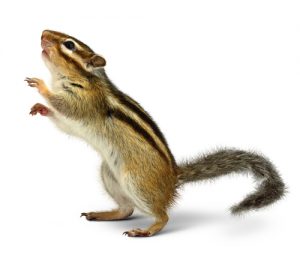
Chipmunks are similar to red and gray squirrels in being day active. Typically chipmunks are related to lower areas of a structure, entering at or below the foundation level. Chipmunks often climb or hide in gutters causing a loud scratching sound and sometimes chirp from the gutter. Hiding food in wall voids and darting in and out, scratching sounds may be heard as Mr. Chipmunk tries to dig around in the wall.
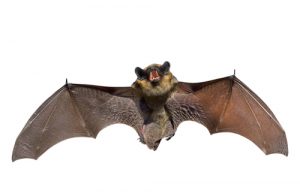 Bat
Bat
Bats are also able to get into attic and wall void in some cases. Bats are able to wriggle into and through very small openings in soffits, around chimney flashing, behind rake boards, shutters and other decorative trim. In summer months bats roost in sheltered locations. Rafters and ridges in attics make ideal roosts and sometimes hold large numbers of bats. Bats are gregarious and can be heard squeaking as they wake up at dusk and return at dawn. Sometimes a faint fluttering sound may be heard as they fly within the structure. Do not attempt to handle bats trapped As the bats leave and return, a scratching noise may accompany this movement. During winter months, bats that do not migrate to warmer regions over winter in caves, hollow trees, and attics. They try to find someplace with a stable temperature to ride out the winter. One place that seems to fit the bill is under attic insulation. They will remain in a sort of inactive state through the winter, waking in the spring when the insects they feed on emerge. If the temperature suddenly rises and the bats wake up, they may crawl around under the insulation making a scratching sound with the tiny claws on the elbow so their wings. This low level scratching can be quite loud if there are a lot of bats. Squeaking may also be heard.
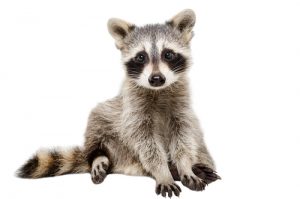 Raccoons
Raccoons
Raccoons can make noise. Should a raccoon get into the wall voids, it will make a lot of noise. Scratching to get out, crying sounds, and hissing are some noises a raccoon can make. Skunks will make similar sounds, along with a strong odor when trapped in a wall void or chimney.
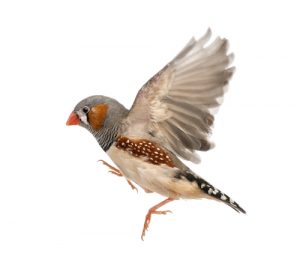 Birds
Birds
Birds have also been indicated as noise makers. Anything from casual beak tapping on a gutter to strong pecking on wooden siding can indicate bird activity. Some woodpeckers, the Downey woodpeckers in particular cut diamond shaped mating displays in wood siding and corner boards. Intended to attract a mate and mark territory, these furrows can cause quite a bit of noise as they are created, as well as damage to siding. Sometimes the pecking can be the result of woodpeckers eating carpenter bee larvae developing within the soffit trim. Starlings, sparrows, pigeons, and other birds may also nest inside damaged walls, or open attics. Nesting activity can be quite noisy with adult birds constantly coming and going from the nest, and the chirping of the adults and young. If a bird gets trapped or lost within the wall void, chirping and flapping may be heard as the bird attempts to escape.
Several types of insects will cause noise in walls. Carpenter ants, wasps, termites, and beetles are commonly found living in the relative seclusion of walls.
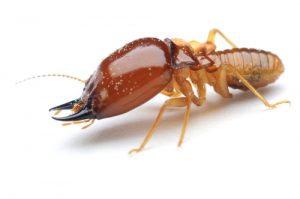 Termites
Termites
Termites are included because large numbers of workers moving inside wood members does create an ever so slight scratching sound. Formosan termites(who inhabit tropical and sub tropical regions) make a slight tapping sound when disturbed by striking their heads against the wood as a warning.
Deathwatch Beetles
Deathwatch beetles, named for the slight tapping they make after emerging from wood, are relativity uncommon. As the adults emergence from the wood, it is thought that the tapping is an attempt to attract members of the opposite sex. Other wood boring beetles such as the New House borer and he Old House borer may also create some ticking or scratching noise as the larvae work within wood members. Firewood may sometimes be the source of such sounds.
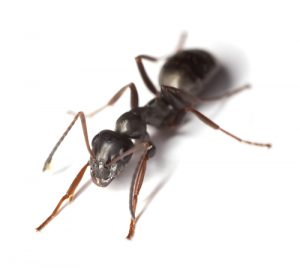 Carpenter Ants
Carpenter Ants
Carpenter ants are very noisy, particularly at night when they are most active. Each ant leg ends in 4 small hook-like structures that allow the ant to grip on almost any surface. These hooks make a scratching sound when a single carpenter ant climbs up a piece of paper. Hundreds of ants all moving within the nest can make quite a din. Carpenter ants make a noise similar to the popping sound of milk being poured into Rice-Crispies cereal. A mixture of scratching and soft clicking that seems to come from one area of the wall, maybe over a window. Carpenter ants do not eat the wood, but hollow it out for nesting galleries. Thin strips of wood may separate the chambers and create an acoustic quality, amplifying the noise. Large nests may be audible from quite a distance away, indicating a lot of ant activity within.
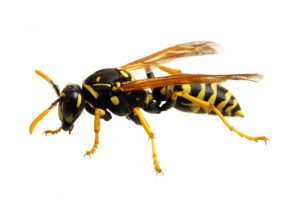 Wasps
Wasps
Several kinds of wasps are also associated with noises in the wall. By far the most common situation is Yellow Jackets nesting in a wall void. In the spring, queen yellow jackets that have over wintered seek out suitable nest sites. The shelter of a wall void is often found through small holes in siding, foundation elements, or other construction deficiencies. Once the nest is started it continues to grow in size throughout the summer into late fall. Chambers are created which house the developing brood. Over time nest material may completely fill several wall voids. As workers move about in the wall feeding the brood and constructing the nest loud noises are made. Audible buzzing, scratching, and tapping sounds will be coming from the nest are, if disturbed this noise will quickly increase in volume. Polistes, or paper wasps are usually happy to build outside on the structure. Eaves and shutters offer ample protection from the elements. A large paper wasp nest may make slight sounds that may be heard inside, just behind the nest site. Mud dauber wasps sometimes choose recessed places to build their characteristic soil and saliva brood chambers. Their movement to and from this area may create a scratching and slight buzzing sound, especially if it is within a hollow window or slider frame.
In the event that you do hear noises coming from the wall, please contact Colonial Pest for a free quote, or call us at 1-800-525-8084 right now! You may also check to see if we do pest removal in your area. There may indeed be some type of pest activity going on. Don’t wait for serious damage to develop!